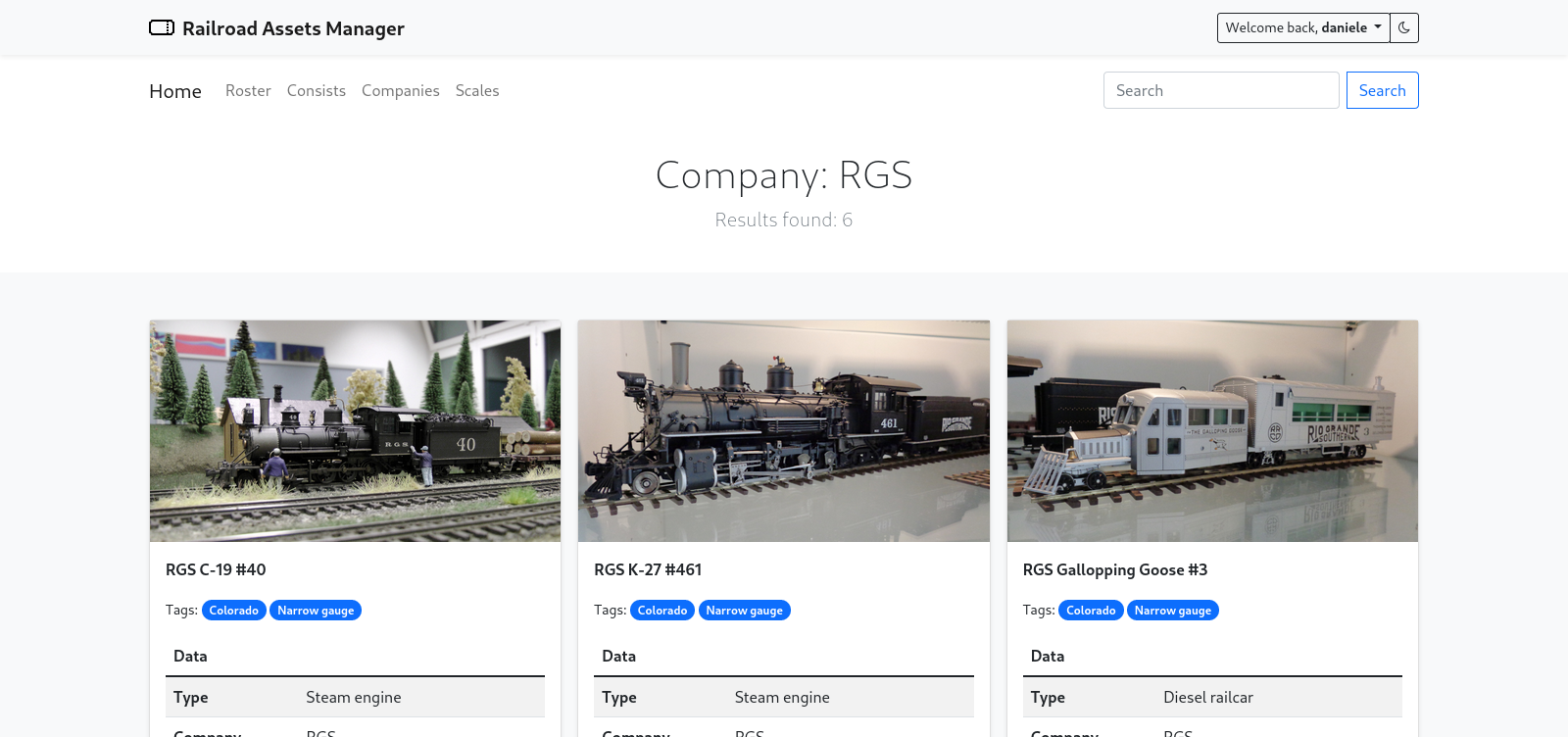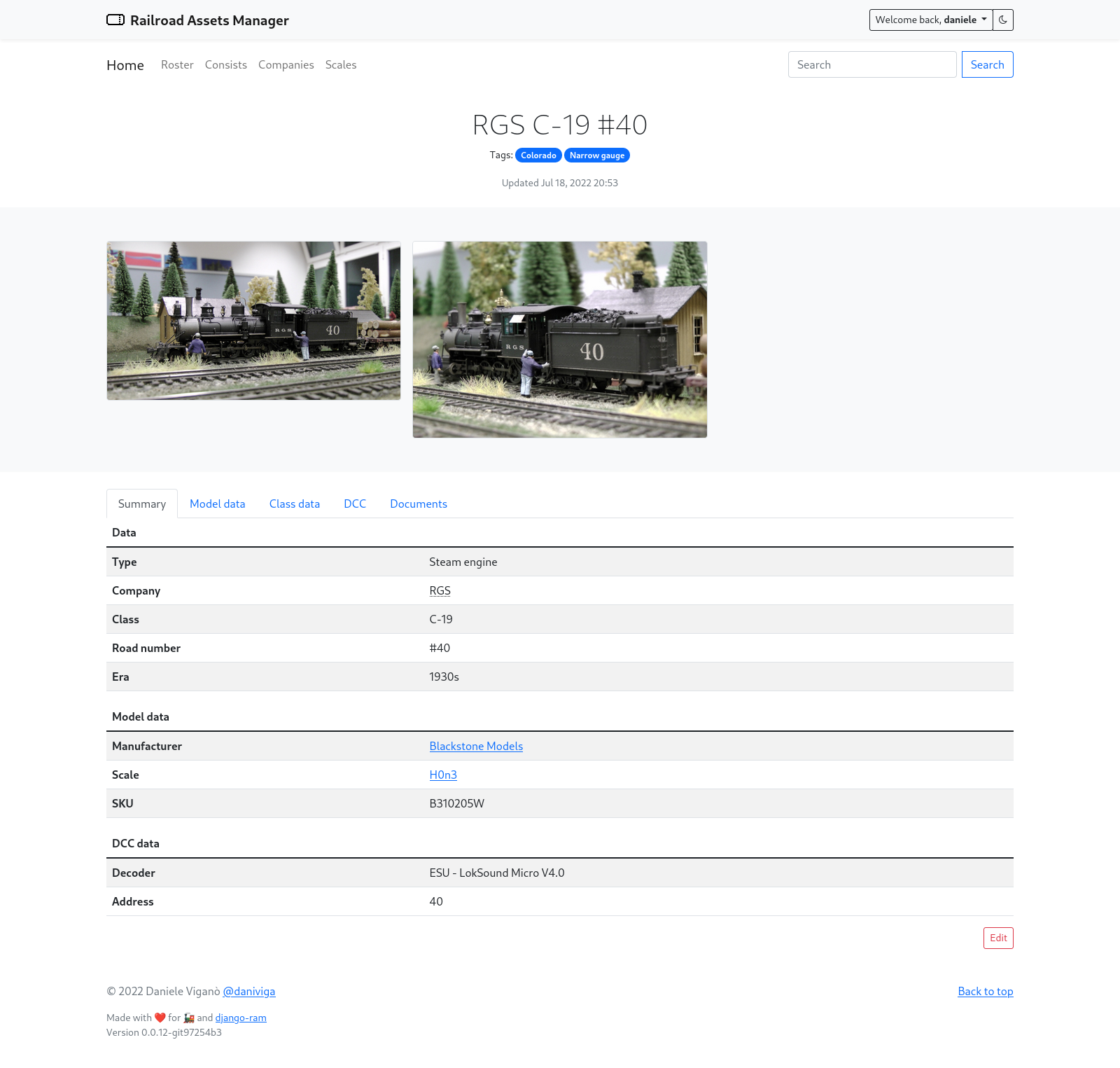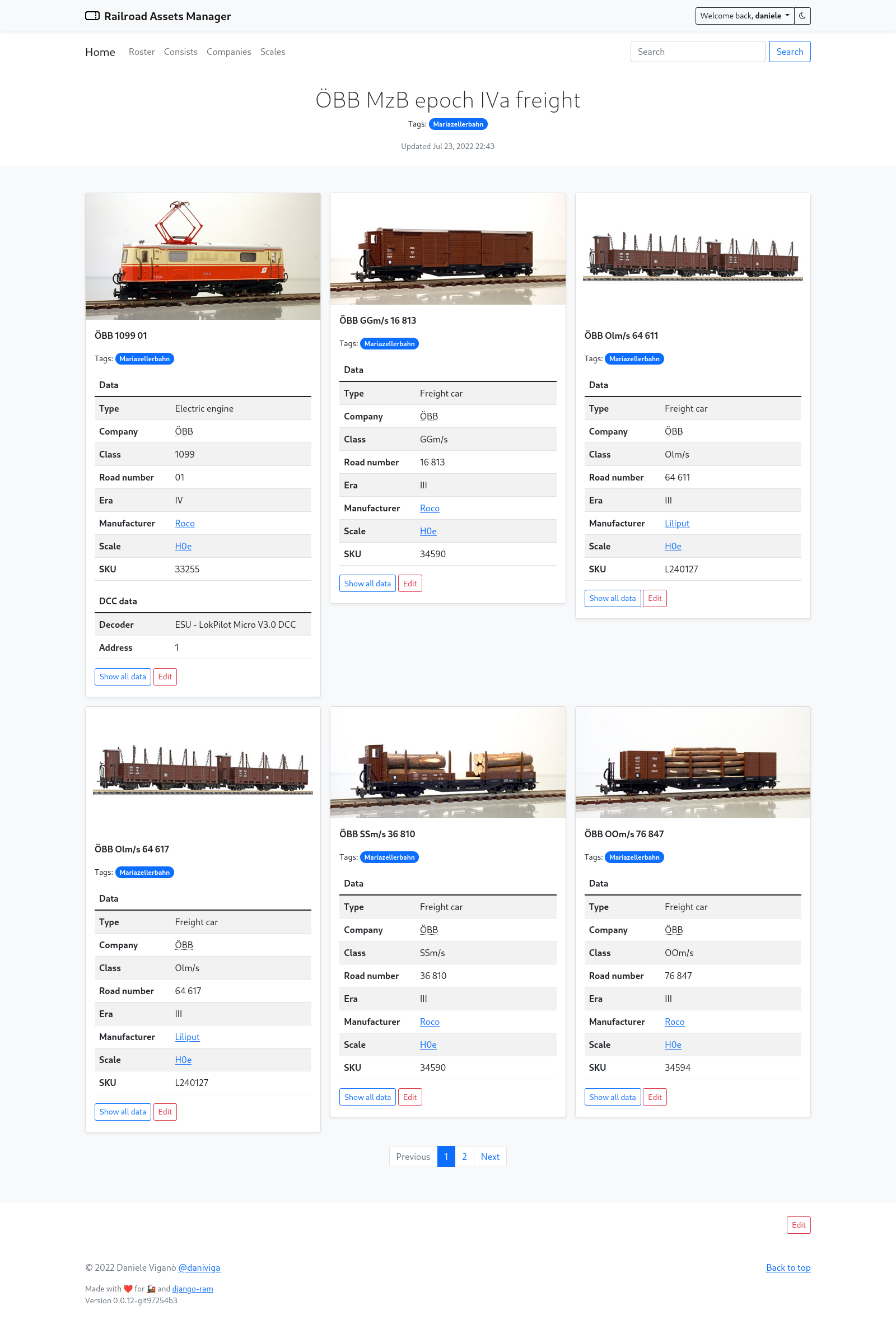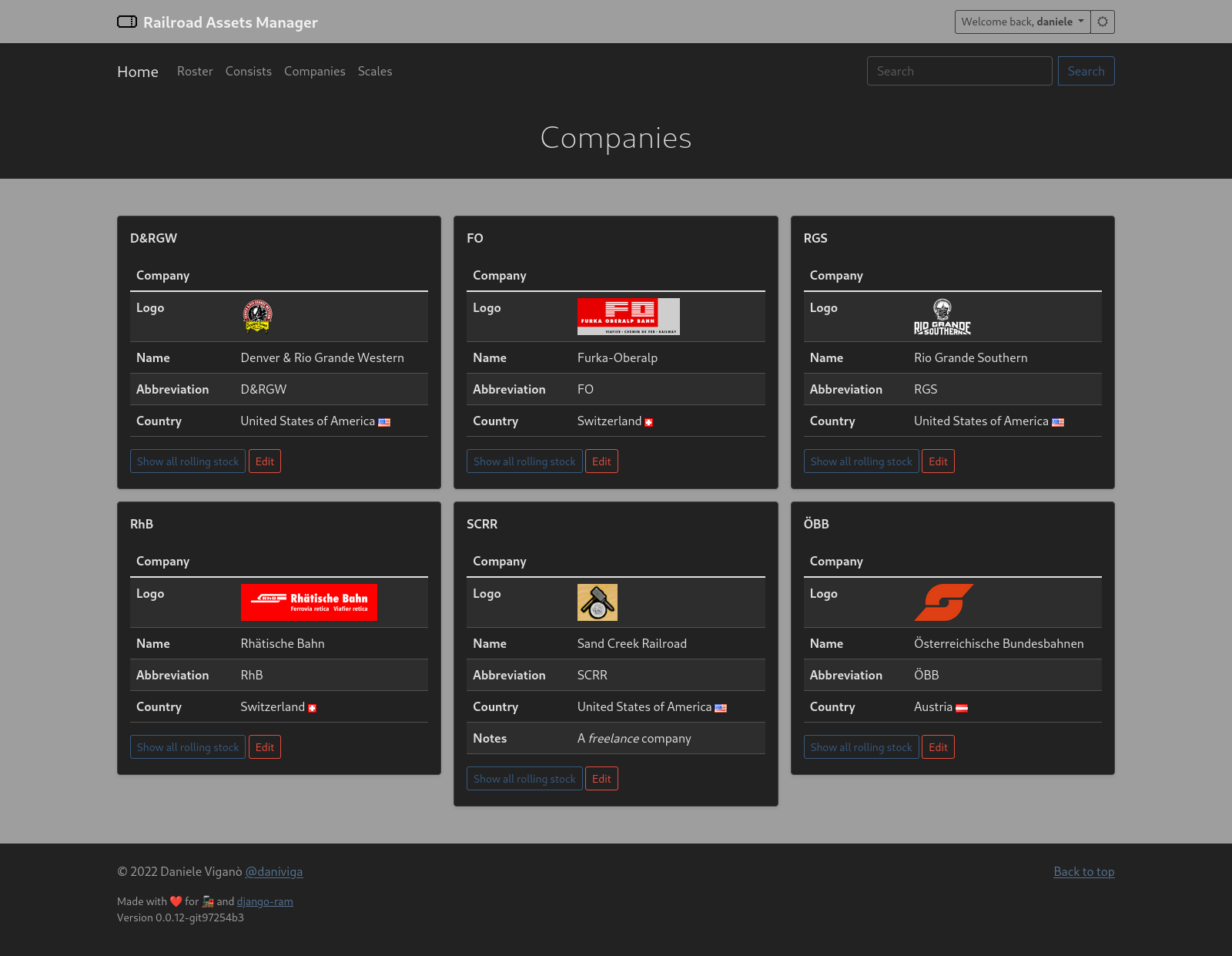Django Railroad Assets Manager (django-ram)
A jff (just for fun) project that aims to create a
model railroad assets manager that allows to:
- Create a database of assets (model trains) and consists with their metadata
- Manage the database via a simple but rationale backoffice
- Expose main data via an HTML interface to show how beautiful is your collection to the outside world
- Act as a DCC++ EX REST API gateway to control assets remotely via DCC. By anyone, if you'd like (seriously?).
Preface
This project is work in progress. It is intended for fun only and it has been developed with a commitment of few minutes a day; it lacks any kind of documentation, code review, architectural review, security assesment, pentest, ISO certification, etc.
This project probably doesn't match your needs nor expectations. Be aware.
Your model train may also catch fire while using this software.
Check out my own instance.
Components
Project is based on the following technologies and components:
- Django: the web framework
- Django REST: API for the lazy
- Bootstrap: for the web frontend
- Arduino: DCC hardware; you must get one, really
- DCC++ EX Command Station: DCC firmware; an amazing project
- DCC++ EX WebThrottle: the DCC++ EX web throttle, a slightly modified version
It has been developed with:
- vim: because it rocks
- arduino-cli: a mouse? What the heck?
- vim-arduino: another IDE? No thanks
- podman: because containers are fancy
- QEMU (avr): QEMU can even make toast!
Requirements
- Python 3.9+
- A USB port when running Arduino hardware (and adaptors if you have a Mac)
Web portal installation
Using containers
coming soon
Manual installation
Setup your virtualenv
$ python3 -m venv venv
$ source ./venv/bin/activate
Install dependencies
$ pip install -r requirements.txt
# Development stuff
$ pip install -r requirements-dev.txt
Bootstrap Django
$ cd ram
$ python manage.py migrate
$ python manage.py createsuperuser
Run Django
$ python manage.py runserver
Browse to http://localhost:8000
DCC++ EX connector
The DCC++ EX connector exposes an Arduino board running DCC++ EX Command Station, connected via serial port, to the network, allowing commands to be sent via a TCP socket.
Its use is not needed when running DCC++ EX from a WiFi capable board (like when using an ESP8266 module or a Mega+WiFi board).
Customize the settings
The daemon comes with default settings in config.ini.
Settings may need to be customized based on your setup.
Using containers
$ cd daemons
$ podman build -t dcc/net-to-serial .
$ podman run -d -p 2560:2560 dcc/net-to-serial
Manual setup
$ cd daemons
$ pip install -r requirements.txt
$ python ./net-to-serial.py
Test with a simulator
A QEMU AVR based simulator running DCC++ EX is bundled togheter with the net-to-serial.py
daemon into a container. To run it:
$ cd daemons/simulator
$ podman build -t dcc/net-to-serial:sim .
$ podman run --init --cpus 0.1 -d -p 2560:2560 dcc/net-to-serial:sim
To be continued ...








